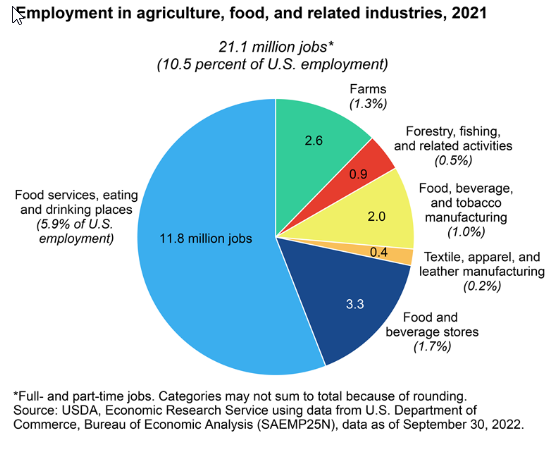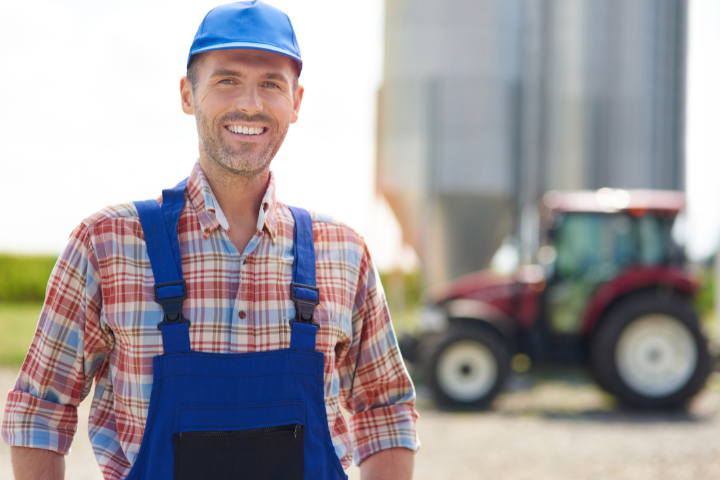
As we roll into the new agricultural season, it’s time to check on the PPE and practices needed to keep farmers and agricultural workers safe during planting season.
The USDA Economic Research Service reports that in 2021, about 10.5% of the total jobs in the U.S. were related to the agriculture and food production sectors–21.1 million full- and part-time jobs. Employment directly on farms amounted to about 2.6 million jobs.
And that’s a large number of workers who’ll be facing a wide range of hazards as they do their jobs. We’ll take a look at the PPE to provide head-to-toe protection from the top hazards faced by those in the farming and agricultural industry.
Farm Safety Tips
- Ensure workers understand rules for safely operating ATVs, tractors, and other equipment, as well as for roadway safety.
- Review PPE to make sure it is all in good working order and replace what’s not.
- Make sure workers understand the seriousness of hazards on the farm and PPE requirements including when to use it and how to use it correctly.
Be Aware of Common Workplace Hazards
Whether the agricultural operation raises poultry, livestock, grain, fruit, cotton, or soybeans, many hazards are common to the people who work in these operations. OSHA offers detailed explanations for many types of hazards that farmworkers face each day, related to the operation of specific types of farms.
As an industry, farmworkers are at high risk for injuries, fatalities and work-related lung disease. In general, farming takes place in more remote locations, further removed from emergency services, making it all the more important to take precautions.
Noise
High noise levels are common in farm workplaces and so is hearing loss. Noise produced by heavy machinery, tractors, chainsaws, and many other types of equipment lead to hearing loss if workers are unprotected. Signs posted at high noise areas serve as reminders to use available hearing protection.
Weather Exposure
The same sun that helps crops grow also exposes workers to UV radiation that can damage skin cells and potentially lead to skin cancer. Working in extreme heat can lead to dehydration, heat exhaustion, or heat stroke. Rain, snow, and wet conditions impair footing and create a setting for dangerous slip and fall accidents.
Livestock Handling/Heavy Machinery
Working with cattle, other livestock, and heavy machinery present the potential for crush injuries. Taking large equipment on the roadways also raises concerns about visibility and correct operation.
NIOSH reports that the leading source of fatalities and injuries in agriculture is farm machinery, accounting for 23–50% of fatalities and approximately 50% of hospitalizations from non-fatal injuries. Injuries caused by animals, particularly handling livestock, represent 1 out of 8 injuries, second only to injuries related to heavy machinery.
Chemicals
Farm production involves application of a wide range of chemicals including:
- Pesticides
- Herbicides
- Fertilizers
- Fuels
- Cleaners
- Solvents
As gases, vapors, or particulates, chemicals are readily absorbed through the skin or inhaled; they can enter the body through the eyes, and can be ingested accidentally during the mixing or application process.
The effects of chemicals on the body range from poisoning or neurological toxicity to long-term damage or illness. Workers don’t need to be actively involved in mixing or applying chemicals to be exposed.
Infectious Diseases
Working around animals also exposes workers to bacteria and germs that can lead to zoonotic diseases, or those that can be transmitted from animals to humans.
These include avian flu, swine flu, and others. The AgriSafe Network offers information on a wide range of zoonotic diseases as well as guides to appropriate PPE for preventing transmission of swine flu and many other diseases.
Musculoskeletal Injury
The nature of many farm operations requires long hours of repetitive work. Repetitive motion, prolonged exertion, working with large animals and moving heavy objects create the risk of injury. Manual material handling, repair work, and milking animals all are connected with increased incidents of musculoskeletal pain.
Respiratory Health Hazards
Farmworkers can be exposed to a life-threatening buildup of toxic gases from manure pits, silos, and confined animal wastes. In poultry buildings the concentration of ammonia can become dangerously high.
Exposure to organic and inorganic dust, pesticides, insecticides, fertilizers, solvents, and a wide variety of other chemicals have the potential to damage respiratory systems. NIOSH reports also that farm workers have an elevated risk of chronic bronchitis, asthma, and other pulmonary diseases.
Agriculture PPE Solutions
Keeping farmers and agricultural workers safe on the job means choosing–and using–appropriate PPE from head to toe.
1. Head Protection
Certainly, protection from the sun and its heat are a consideration–but what is required is much more than a simple ball cap. Head protection goes far beyond the need to provide shade.
When applying or mixing chemicals, face shields and full head coverings are needed to prevent contact with the skin or ingestion. Protective headgear may include wide-brimmed hats as well as bump caps that are fully washable.
Those who work with poultry, especially when there is a known potential for illness within the population, need head and hair coverings to protect from airborne contaminants.
2. Hearing Protection
Most types of farm machinery are noisy. As a result, noise-induced hearing loss is common in agriculture work. Hearing damage is permanent and that in turn can lead to a reduced quality of life. Protect hearing by using earplugs or earmuffs and identify those areas where noise is greatest to remind workers of the need for hearing protection.
3. Eye Protection
Injuries to the eyes are often preventable simply by wearing the right type of eye protection. Protect the eyes from blows and contact with chemicals, airborne pathogens, dust and particles.
Choose goggles or other protective eyewear appropriate for the activity; eye protection may also be integrated into face shields and full head coverings.
4. Body Protection
In addition to clothing that is sun safe, with UPF of at least 30, for many applications, coveralls are a necessity. Working with pesticides or other chemicals, or for many operations when exposure to avian flu is possible, such as monitoring bird health and other related processes, coveralls are required.
The type of coverall and its characteristics will depend on the application–protective clothing may need to be disposable or it may be a type that can be disinfected. PermaGuard II™ coveralls are among the protective products Liberty Safety offers for full body protection.
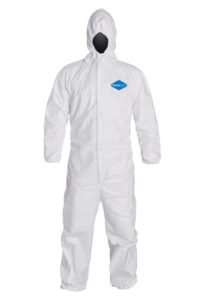
PERMAGARD II™ COVERALL - ATTACHED HOOD & ELASTIC ANKLES
PermaGard II™ coveralls with attached hood and elastic ankles are made of Micro-Porous Film over SpunBonded Polypropylene and offer excellent protection against contaminants, light liquid splashes, and particles. They’re constructed with serged seams, elastic at wrists, ankles, and waist, and have a zipper front closure with storm-fly.
Be sure to choose the correct coverall based on the specific situation. Choosing excessively heavy coveralls could lead to overheating and a new set of risk factors. When working with pesticides, follow the instructions provided with the chemical to select appropriate coverings based on the formulations being used.
When mixing or pouring chemicals, aprons provide additional protection from splashes.
5. Respiratory Protection
Many different activities in farming involve exposure to chemicals, grain dust or particulates that are harmful to the respiratory system.
Choose air purifying disposable masks, NIOSH-approved N95 disposable particulate respirators, or other respirators depending on the hazards potentially present and the specifications of the chemicals involved or the need to filter out certain pathogens. The DuraMask™ N95 disposable particulate respirator with head straps is a popular NIOSH-approved choice from Liberty Safety.
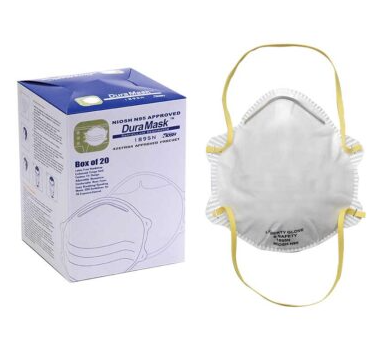
DURAMASK™ N95
N95 NIOSH disposable particulate respirator with adjustable aluminum nose bridge and latex-free dual elastic head strap for maximum protection.
Working with poultry or livestock, tasks may involve increased exposure to ammonia, manure or particulate matter. Toxic gases, grain dust, chemical sprays, cleaning solutions, and particulate matter all present hazardous exposure for farm workers.
AgriSafe Network offers guidance for helping you select which respirator is right for your application.
6. Hand Protection
Gloves are a key component of PPE for agriculture and farming. In many instances, the right gloves offer improved grip as well as necessary protection from exposure to chemicals, burns, cuts and abrasion.
Choose gloves based on the type of exposure and protection needed. The choice of glove for the purpose is closely tied to the specific formulations of pesticides and other chemicals that will be used; take care to follow instructions closely to ensure the right glove selection.
Many skin diseases result from pesticide exposure. Keep in mind that the primary way that pesticides enter the body is through the skin, and prolonged exposure, as well as acute exposure, carries health risks.
If you have questions or need help selecting the right gloves for your application, the team at Liberty Safety can help. Green Nitrile Gloves are among our popular styles.
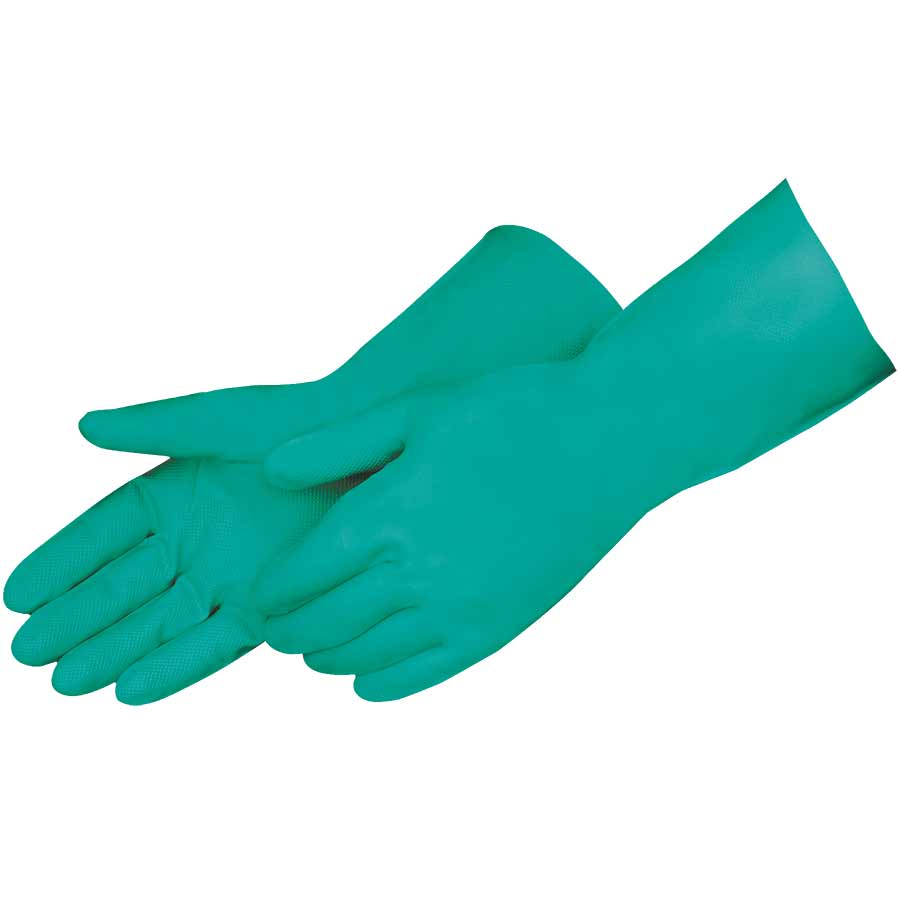
GREEN NITRILE GLOVES
Unlined 15 mil gloves, 13” length, with embossed grip on palm and fingers.
7. Foot Protection
Farming is an outdoor job–mud, dirt, and slippery surfaces are to be expected. Working with animals, equipment, or crops, the right foot protection is necessary. Disposable foot coverings may be needed when attending to poultry, especially if illness is present. In other circumstances, waterproof footwear is needed to provide sure footing and slip resistance. DuraWear™ boots are available in plain toe or steel toe versions to provide foot protection.

DURAWEAR™ PLAIN TOE PVC BOOTS
16” length. One piece injection molded black high molecular PVC compound. Non-skid, bar cleat outsole.
Cultivate Safety
Remember to read labels on all chemical products and follow best safety practices. When selecting appropriate gloves and respirators, the choice will depend on the specific exposure threats.
Farming and agricultural workers face a host of challenges every day. The proper PPE can make the difference between safety and debilitating illness or injury. Liberty Safety is here to help you make the right choice to keep yourself, your workers, and your family safe.

